Extreme Close Quarters Concepts
20 Episodes
The ShivWorks Extreme Close Quarter Concepts (ECQC) course offers a multi-disciplinary approach to building functional, combative handgun skills at zero to five feet. The course is designed to instill core concepts of seamless integration and provide the platform for aggressive problem solving during a life or death struggle at arm’s length or closer. We emphasize the common body mechanics that apply across different skill sets. That way, all combative software is reinforcing. Once students’ skill sets are ingrained, they will be stress inoculated with force-on-force drills using marking cartridges and protective equipment.
-
 06:04Episode 1
06:04Episode 1Meet Your Instructor
Episode 1
Craig discusses his background and inspiration for developing his Extreme Close Quarters Concepts.
-
 06:09Episode 2
06:09Episode 2Building the Operating System | Part 1
Episode 2
Craig talks about the operating system required to be effective in extreme close quarters combat. There are 3 P's in the operating system (Pressure, Posture, Position). The attributes are developed through training.
-
 13:32Episode 3
13:32Episode 3Building the Operating System | Part 2
Episode 3
Craig teaches and demonstrates the 3 P's of the combat training environment. The Mountain Goat drill helps you learn Posture Under Pressure. Positioning is critical, but must maintain posture.
-
 07:10Episode 4
07:10Episode 4Basic Attachments
Episode 4
Craig explains the 4 basic ties in combat (Underhook, Overhook, Bicep Tie, Wrist Tie). These are core to combat in a weapons based environment.
-
 07:38Episode 5
07:38Episode 5Pummel for Underhook
Episode 5
Craig demonstrates how to swim or pummel for the underhook to take the inside position. Practice the drill without resistance. After going through a number of reps, then add pressure.
-
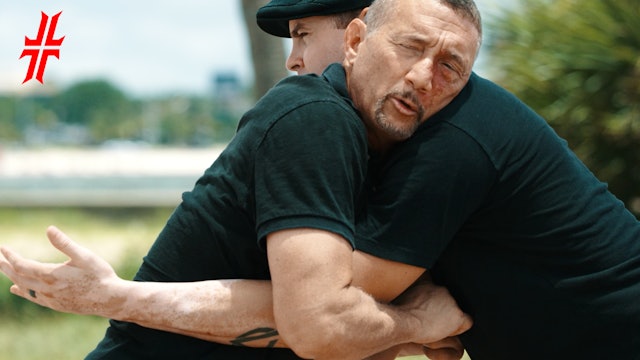 07:16Episode 6
07:16Episode 6Whizzer Escape
Episode 6
Craig demonstrates the whizzer as a variation of the overhook to take the inside position. Cut the underhook with the whizzer and maintain posture.
-
 09:19Episode 7
09:19Episode 7Hand Fighting Bicep Ties
Episode 7
Craig demonstrates how to use the bicep tie to drive the opponent's limb away from you. This is a responsive action to a free swinging knife in a clinch. The wrist tie is also useful in controlling the opponent's limb.
-
 10:24Episode 8
10:24Episode 8The Underhook Arm Tie
Episode 8
Craig demonstrates the underhook arm tie as the best way to resolve a clinch. It allows for several options as transitions in position. Plan A is to get behind someone. Plan B is to do the hook and tie combination.
-
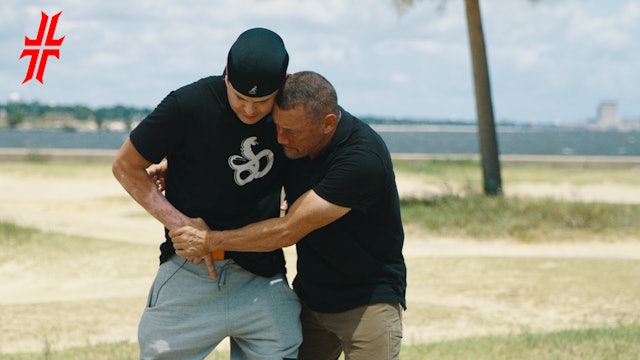 06:12Episode 9
06:12Episode 9Exiting the Clinch Strategy
Episode 9
Craig discusses the 2 options for a primary and secondary plan of escape. Setting up the Duck Under and the Arm Drag.
-
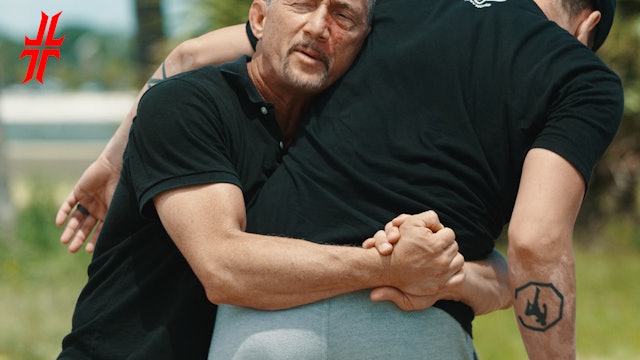 10:17Episode 10
10:17Episode 10Duck Under
Episode 10
Craig demonstrates the proper technic to execute the Duck Under to setup an escape in a clinch situation. This can be done on the underhook side or the tie side.
-
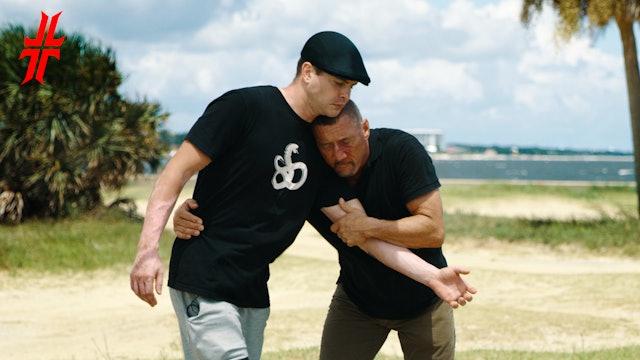 05:50Episode 11
05:50Episode 11The Arm Drag
Episode 11
Craig demonstrates the proper technic to execute the Arm Drag to setup an escape in a clinch situation. Always exit on the side your head is on.
-
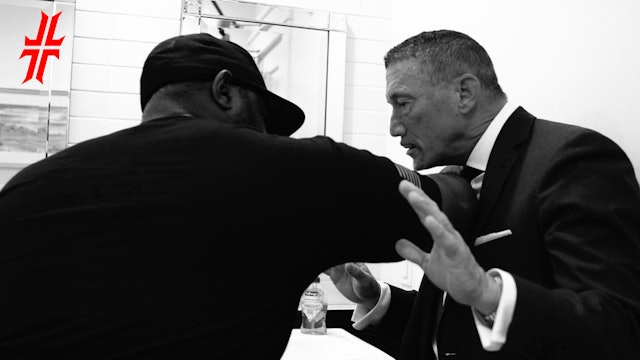 12:31Episode 13
12:31Episode 13Thumb Pectoral Index and Fending Positions
Episode 13
Craig demonstrates the proper technic for drawing and firing in close range with an opponent. Using the elbow shield provides a defensive position while you deploy a weapon for defense.
-
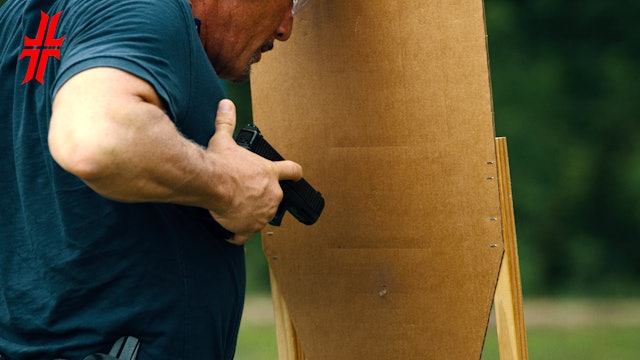 10:30Episode 14
10:30Episode 14Thumb Pectoral Index Live Fire
Episode 14
Craig demonstrates a live fire scenario with a close range pistol draw in an assault scenario. Checking your muzzle line is critical to maintaining a safe and effective shot. Check your support hand in the process.
-
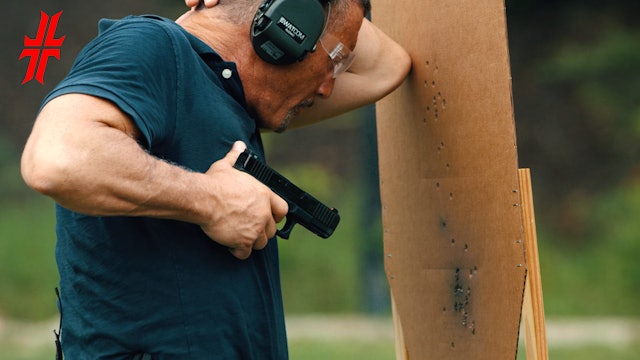 17:04Episode 15
17:04Episode 15Appropriate Extension Live Fire
Episode 15
Craig demonstrates the technics of appropriate extension in a live fire drill. Target proximity is the primary consideration for this exercise. At no point in the presentation should the opponent be able to reach out and grab the weapon.
-
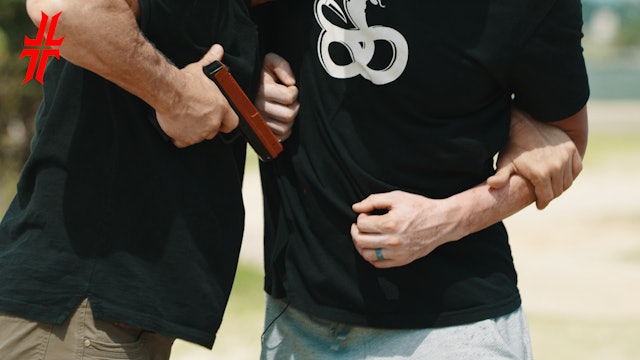 14:11Episode 16
14:11Episode 16In Fight Weapons Access
Episode 16
Craig teaches the principal strategy of when to draw a weapon in a fight scenario. This is based on threat awareness and control. Breaking range and drawing is ideal, but when you have no options, you must know how to handle In Fight Weapons Access.
-
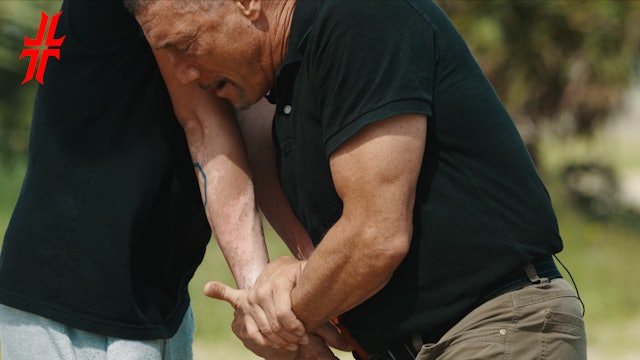 07:47Episode 17
07:47Episode 17Standing Holstered Weapons Retention
Episode 17
Craig demonstrates weapon control with an elbow pin in a standing fight scenario. This can be done with a holstered weapon in the appendix position or the strong side hip.
-
 09:50Episode 18
09:50Episode 18Ground Pistol Work | Part 1
Episode 18
Craig teaches the principal strategies for in fight weapons access and control in a ground fight. Using leg work and kicking help you maintain position and make space. The plan is to get up or allow you to access your weapon. Getting up is Plan A.
-
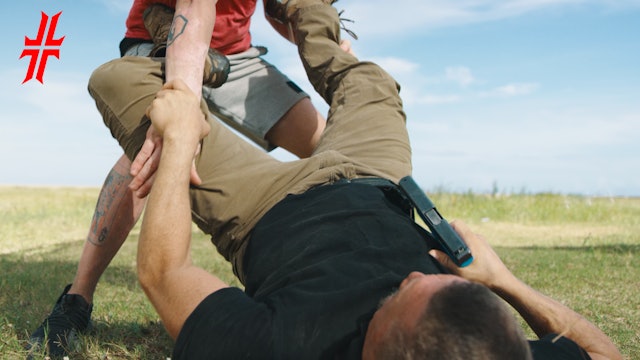 11:19Episode 19
11:19Episode 19Ground Pistol Work | Part 2
Episode 19
Craig demonstrates a critical technic called a Hip Escape to help you get out of an overwhelming threat in a ground fight. The steering wheel technic allows you to control the opponent and create space. Same rules for using the pistol standing apply to using it when grounded.




